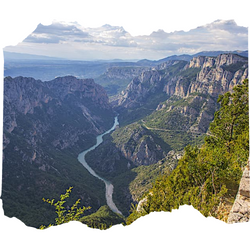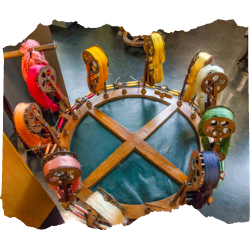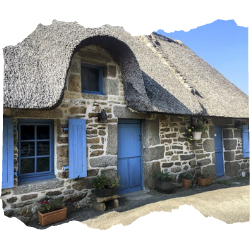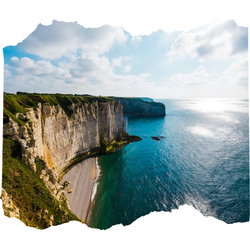Unsure about your French table manners? Click Here to download > > How to avoid these 10 food etiquette mistakes !
- Home ›
- Destinations ›
- Undiscovered France ›
- The Ardèche
The Ardeche in France: 7 Delightful Surprises
Are you searching for wilderness?
For stunning gorges and rivers slicing dramatically through mountains?
All of it within minutes of magical medieval villages and French culinary delights?
Welcome to the Ardeche in France, in the heart of the Auvergne-Rhône-Alpes region.
(Actually, it's spelled Ardèche, with an accent, and is pronounced ar-DESH.)
NOTE: Pages on this site may contain affiliate links, which bring in a small commission at no cost to you.
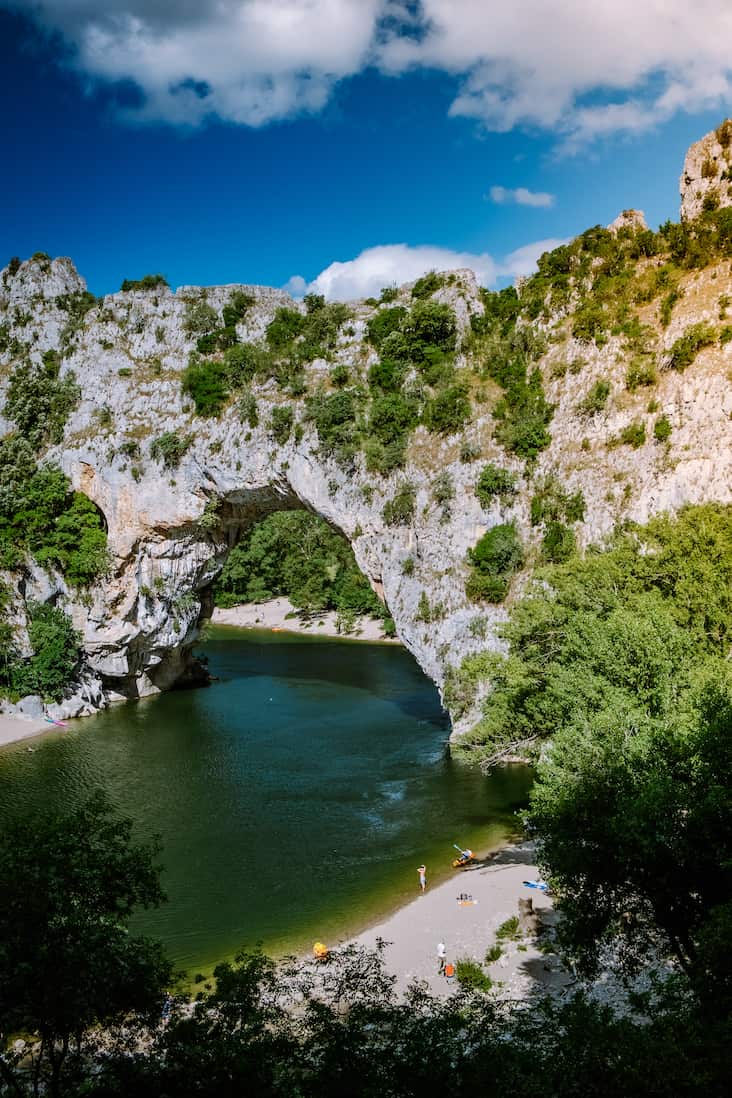 The natural stone bridge of Pont d'Arc in the Ardeche, France; it has tiny beaches along the way and you can see the canoes pulled up to shore (photo fokkebok)
The natural stone bridge of Pont d'Arc in the Ardeche, France; it has tiny beaches along the way and you can see the canoes pulled up to shore (photo fokkebok)The Ardeche is France's nature playground, where the Ardeche River tumbles down from the Massif Central, puncturing the stone with magical waterfalls and weaving around villages.
This is not a highly touristed region. Mostly French visitors come here, and only 16% are from abroad: that's how well hidden it is. In fact, you'd be hard-pressed to find a train station anywhere in the Ardeche so if you want to visit, you'll have to do it by car.
July and August are more crowded than the rest of the year, but crowds in this remote region don't mean much.
(The Ardeche, by the way, is one of France's 101 départements.)
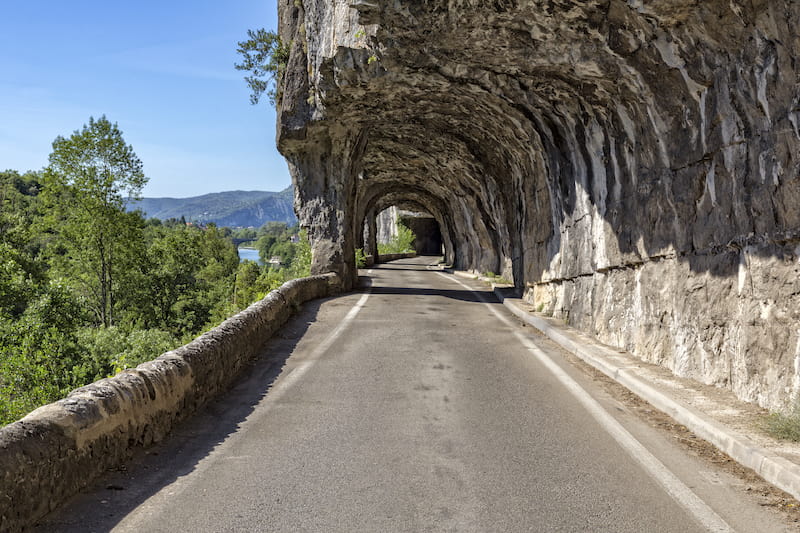
The region is also known for its food, among which the most famous are chestnuts – roasted, baked in a cake, puréed, used as stuffing, or my own favourite, marrons glaçés, chestnuts dipped in syrup then grilled, sprayed with icing sugar, oven-dried, and wrapped in crinkly gold-coloured foil or preserved in a jar.
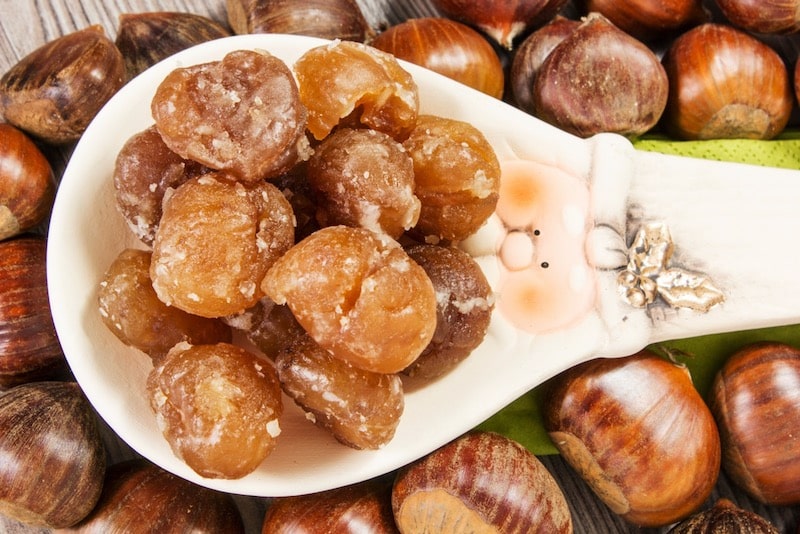 Among the best sweets in the world – glazed chestnuts from the Ardeche
Among the best sweets in the world – glazed chestnuts from the Ardeche1. The Ardeche is wild, very wild
Wild as in wilderness. This is one of the few corners of France through which I’ve driven for an hour or more without reaching a town or city of any size (or if there was one, it was well-hidden).
How wild is it? The Ardeche is the only French department without passenger trains (although three train stations will, apparently, reopen), which puts it beyond the reach of non-motorized tourists.
If you're not driving your own car, you may want to consider renting one. You'll need it to get around. The roads are narrow and twisty, so you will have to drive with caution. In case you need to brush up on your French driving skills, these tips might help.
Taking a canoe trip down the Ardèche River is almost a rite of passage for French teenagers on a summer holiday or away at camp.
I still remember mine, disliking water as I do. Yet even as a non-swimmer, the good memories have stayed with me – the unexpected nudist beach we teenagers tried to pretend not to notice, the baking sun dampened by splashing water, screams of fun and summer laughter, heart-stopping moments when the water rushed by a bit too quickly along the 20 or so rapids.
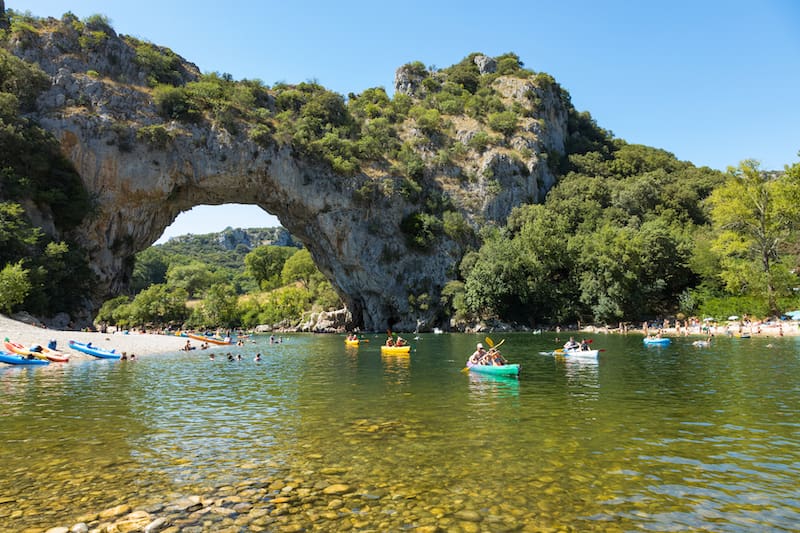 At the height of summer, it can get pretty crowded on the Ardeche; later in the autumn, most of these people will be gone
At the height of summer, it can get pretty crowded on the Ardeche; later in the autumn, most of these people will be goneThis is the green lung of France, designed for lovers of the outdoors: you can follow one of the 1600 climbing paths that criss-cross the Ardeche, go pot-holing in Europe’s Number One pot-holing region (2500 underground caves), or indulge in the more mundane parasailing, rock climbing, horseback riding, mountain biking, rafting, canyoning...
If you look at a map of the Ardeche you’ll see what I mean – it’s mostly rivers and mountains and you’ll understand why the region is so focused on ecotourism and responsible tourism. No one wants to spoil this place.
Enjoy nature with a canyoning adventure in the Ardèche!
2. The Ardeche in France has the best prehistoric caves
On 24 June 2014 the Chauvet-Pont d’Arc cavern was inscribed on UNESCO's coveted World Heritage list, which had this to say about the complex: “They are of exceptional aesthetic quality, demonstrate a range of techniques, including the skillful use of colour, combinations of paint and engraving, anatomical precision, three-dimensionality and movement.”
In other words, they are among the best prehistoric caves of France.
The original cave, the Grotte Chauvet, cannot be visited because people would endanger it. So they built a twin: its replica at Chauvet-Pont d'Arc is every bit as astounding as the original (no, I haven't seen the original, but specialists who worked on the replica vouch for its accuracy).
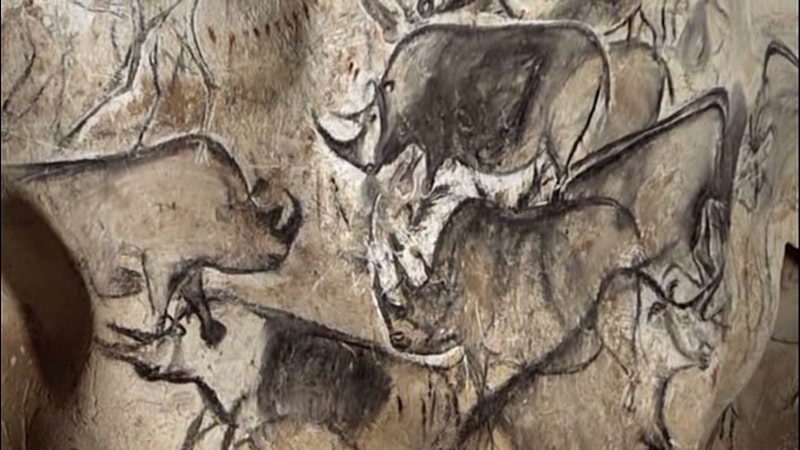 Cave paintings at Chauvet-Pont d’Arc
Cave paintings at Chauvet-Pont d’ArcSealed off for 36,000 years until it was ‘discovered’ in 1994, its wall paintings introduce us to a unique collection of 424 individual living creatures, ranging from a panther (the only panther cave drawing in existence) to the more mundane bears and mammoths.
These paintings are twice as old as the Paleolithic artworks of Lascaux, France’s most famous cave paintings.
If you're partial to grottoes, visit the Aven d’Orgnac, another of France's famous prehistoric underground cave networks. In summer, when the sun is baking above, a trip to the bowels of this dark den of prehistory will cool you off and educate you in equal parts.
If it's stalactites and stalagmites you're after, the Grotte de la Madeleine is a worthy visit
3. The Ardèche is spa country
France has a wealth of spas, the most famous being near mountains or by the sea.
So it's no surprise that the Ardeche has plenty of spas.
Vals-les-Bains has been a spa town since the 17th century and the region has several spa towns – like Neyrac-les-Bains or Saint-Laurent-les-Bains, whose name (the word bains means baths) should give it away.
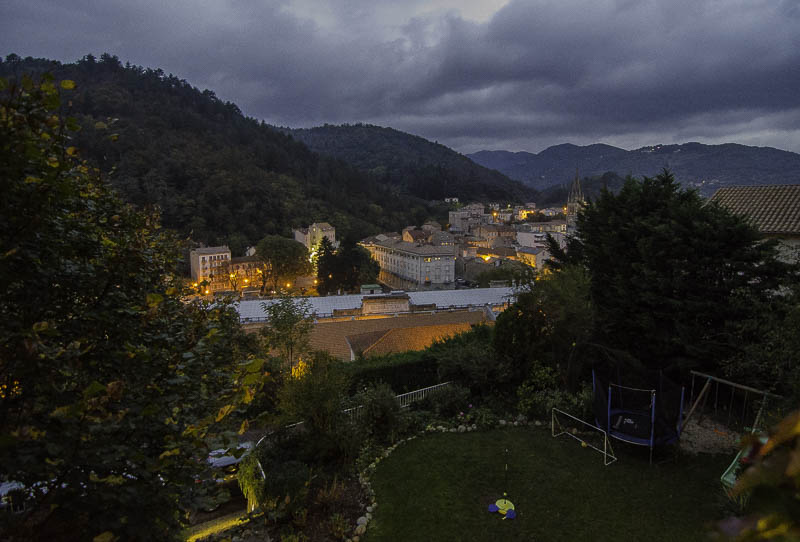 Vals-les-Bains, a spa center dating back to the 17th century (Photo Ardèche Tourist office)
Vals-les-Bains, a spa center dating back to the 17th century (Photo Ardèche Tourist office)While you're taking the waters, take them in a glass, too: the region is known for its bottled sparkling, Vals, which you'll also find elsewhere in France.
➽ MY HOTEL OF CHOICE IN VALS-LES-BAINS: VILLA AIMÉE
4. This wild land is full of gastronomic surprises
My favourite restaurant in this region, located at the very edge of the Ardè is Le Carré d'Alethius, where you can both eat a one-star Michelin meal and spend the night (it's also a hotel).
Yet you could easily miss it, tucked as it is into a tiny side street between two larger avenues of the village of Charmes-sur-Rhône.
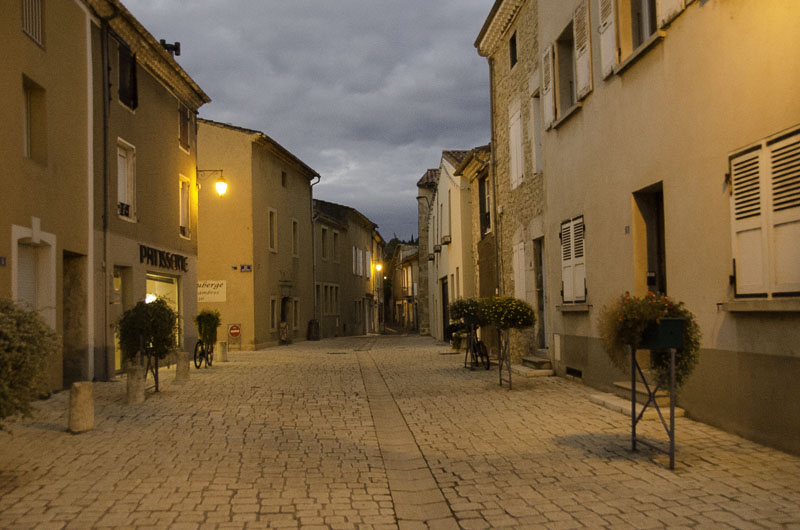 The village of Charmes-sur-Rhone... well-named; Le Carre d’Althuis is down that little street on the left
The village of Charmes-sur-Rhone... well-named; Le Carre d’Althuis is down that little street on the leftOlivier Samin runs the kitchen and his wife Stephanie is in charge of the front room, and what they deliver is as beautiful on the eyes as it is to the palate.
I ate here before they got the star and I remember thinking they should have one... the chef did make his mark and eventually received his reward. Have a look at their menu if you're in the mood for a memorable meal.
 I'll let this dessert speak for itself...
I'll let this dessert speak for itself...You might also like these stories!
5. The venerable chestnut has its very own festival
As we have already seen, the Ardeche instantly manifests thoughts of chestnuts in France.
At Christmas time, our minds of course turn to marrons glacés, which I start looking for in late November, but they must be from the Ardèche.
The little brittle fruit is the star of its own festival, called the Castagnades, two days of chestnut-centered extravagance throughout the Ardèche in October each year. After all, half of France's chestnut production comes from this region.
I joined in the festivities in the mountaintop village of Antraigues and my festival weekend looked something like this: strolled around the chestnut and farmer’s market, ate roasted chestnuts, dropped in to visit some exhibits about chestnuts, ate glazed chestnuts, went on a chestnut gathering walk, chatted with a member of the Confrérie de la Chataigne d’Ardèche, the brotherhood of the chestnut (one of the many food brotherhoods in France), and ate a full chestnut-based meal.
In case you can’t tell, I love chestnuts. Pure heaven.
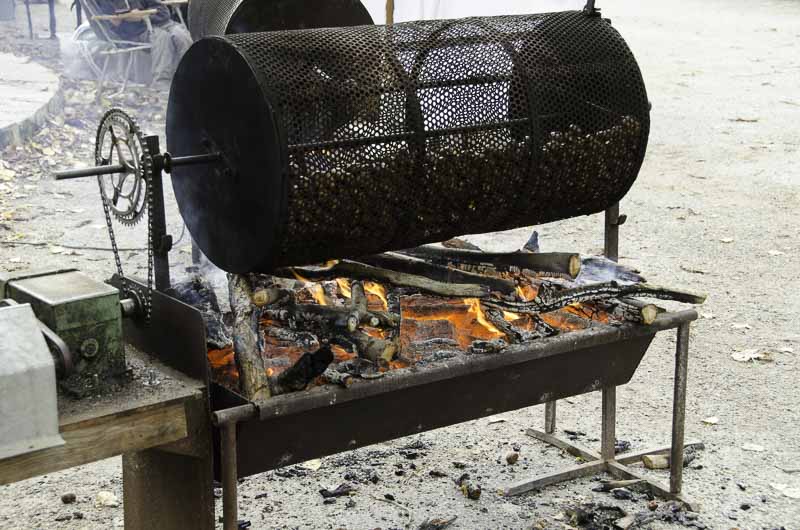 Roasting chestnuts at the Castagnades in Antraigues
Roasting chestnuts at the Castagnades in Antraigues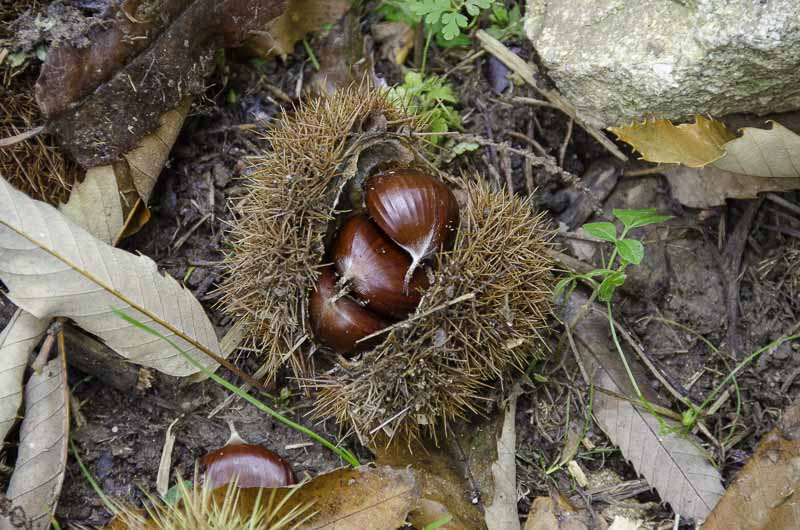 The perfect, plump chestnuts of the Ardèche
The perfect, plump chestnuts of the Ardèche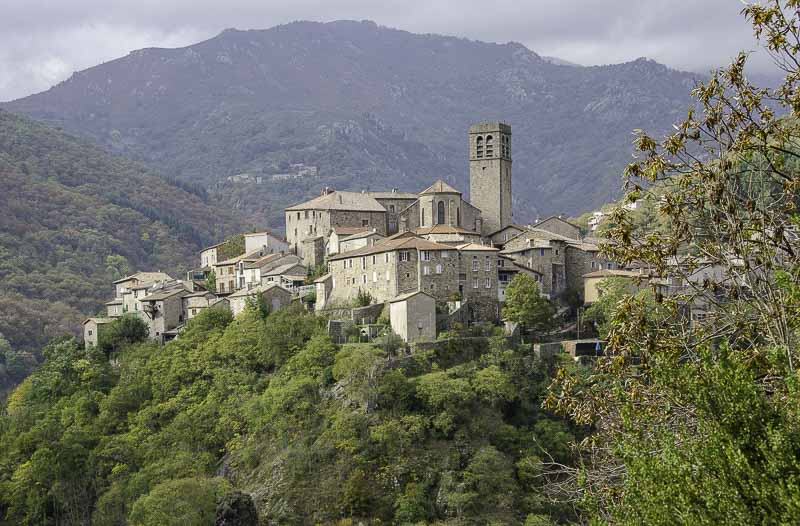 Antraigues-sur-Volane, one of the "Villages with Character" of the Ardeche
Antraigues-sur-Volane, one of the "Villages with Character" of the Ardeche6. The hot air balloon was invented here in 1783
The French word for hot air balloon is montgolfière, in honor of the Montgolfier brothers who wanted to learn to fly and invented the first balloon in nearby Annonay in 1783.
This being France, the event celebrated every year, with a festival.
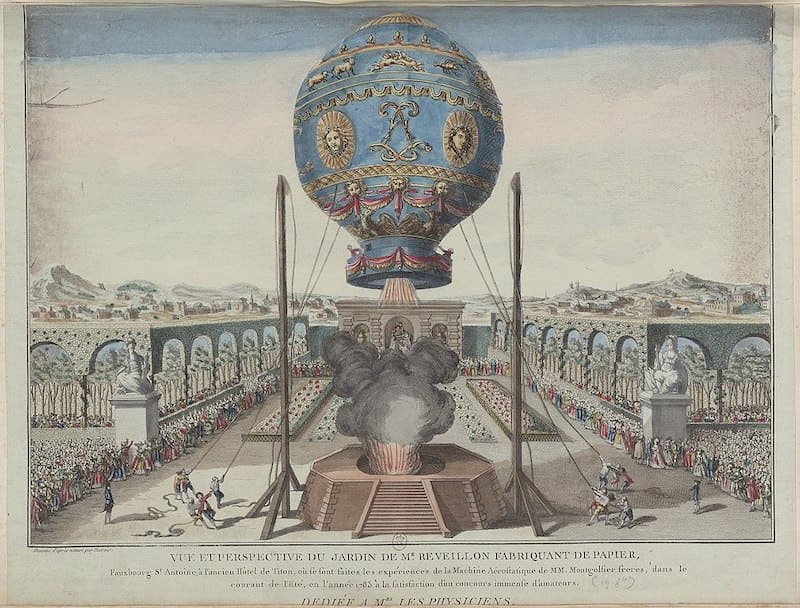 Revisiting the early flights of the hot air balloons, or montgolfières, invented in the Ardeche (public domain)
Revisiting the early flights of the hot air balloons, or montgolfières, invented in the Ardeche (public domain)7. The story behind the Pont d'Arc
The Pont d'Arc is a natural rock bridge over the Ardeche River, rare but not unique in itself. What does make it stand out is its size: 54 meters (60 yds) high and 59 meters wide. It also happens to be the only rock formation of its kind that spans a river full of human activity.
For a long time, this was the only way to cross the river, especially during the Wars of Religion, when it was manned by armed soldiers. Sadly, scared of potential Protestant invaders, Louis XIII destroyed part of the natural bridge to hamper their passage. At some point, engineers contemplated building a road over the bridge but thankfully the idea was abandoned.
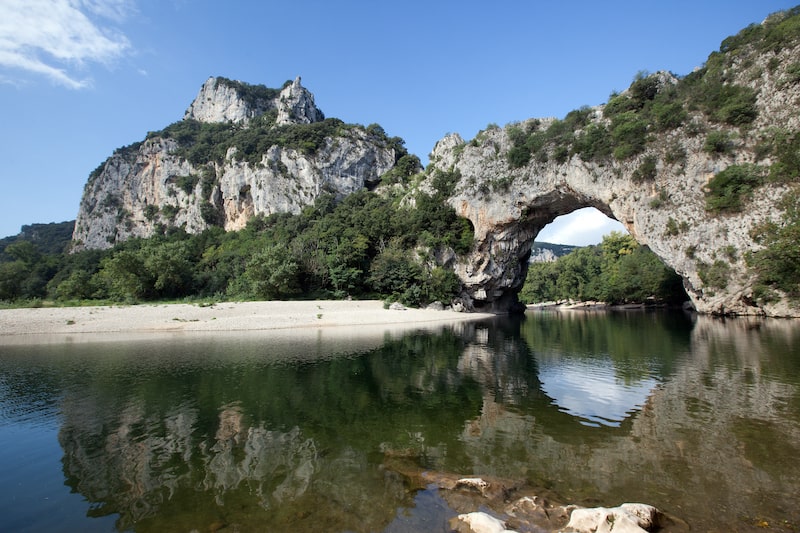 Vallon Pont-D'arc, gateway to the Gorges of the Ardeche
Vallon Pont-D'arc, gateway to the Gorges of the ArdecheOf course such a stunning sight would have a legend behind it...
It would seem that a local lord married a lovely girl from a nearby town but was jealous and locked her up in a tower on the side of the mountain.
Then one day, a pilgrim, not the most handsome pilgrim, requested the hospitality of the lord. As he droned on about his possessions, a bit dismissive of his guest, the "harmless" pilgrim escaped, freed the lady, and off they escaped.
The lord spotted them from his perch on the tower and fell to his knees, praying for his wife's return.
There was a terrible groan as the mountain cleaved, lifting the runaways up the side of the mountain to the lord. As he embraced his wife, the pilgrim changed into a devil and disappeared in a puff of smoke... and the bridge remained.
Practical information to visit the Ardèche
- As I mentioned, there is no train transport to the Ardèche (although you can reach Valence, on its edge). To visit, you'll need a car – compare prices here.
- The nearest airport to Ardeche France is Le Puy, but your best bet is to fly into Lyon or Marseille or Montpellier and rent a car from there.
- In the Ardeche camping is one of the favourite pastimes. Check out the available Ardeche campsites here.
- The Ardèche has a number of tourist offices, by town or area. Consult them here.
- The best Ardeche weather is from May to September. July and the first half of August are the most crowded months, but "crowded" in the Ardeche certainly isn't the same as crowded in other parts of France.
Pin these and save for later!
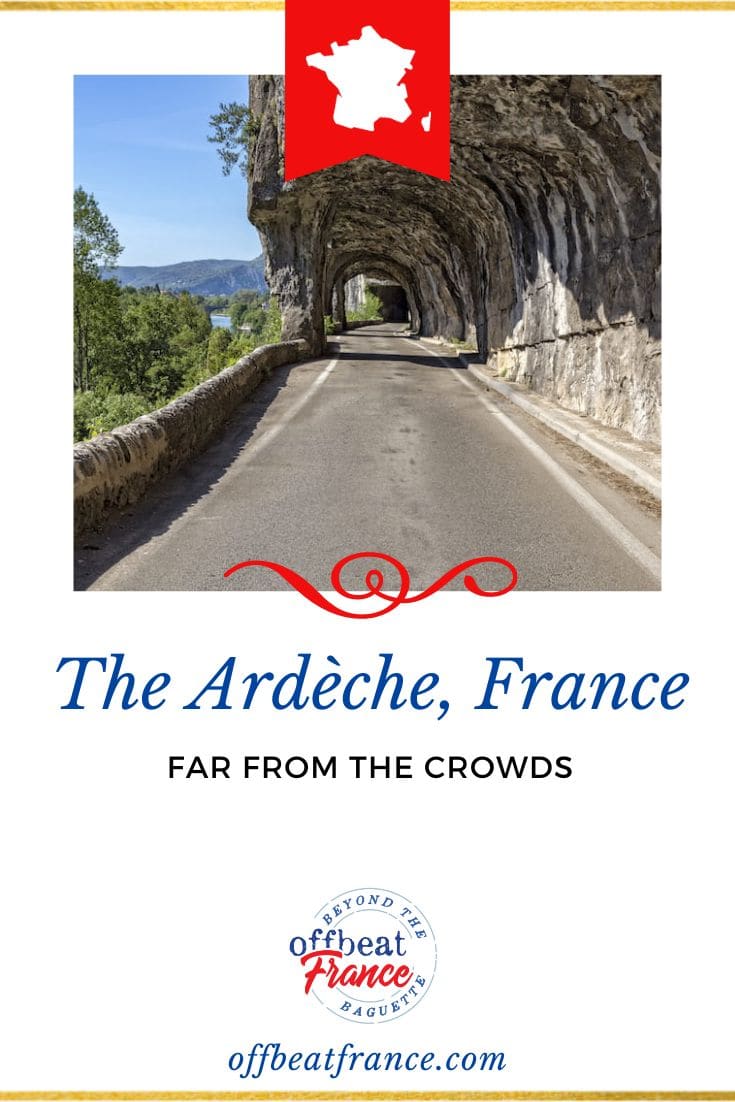 |
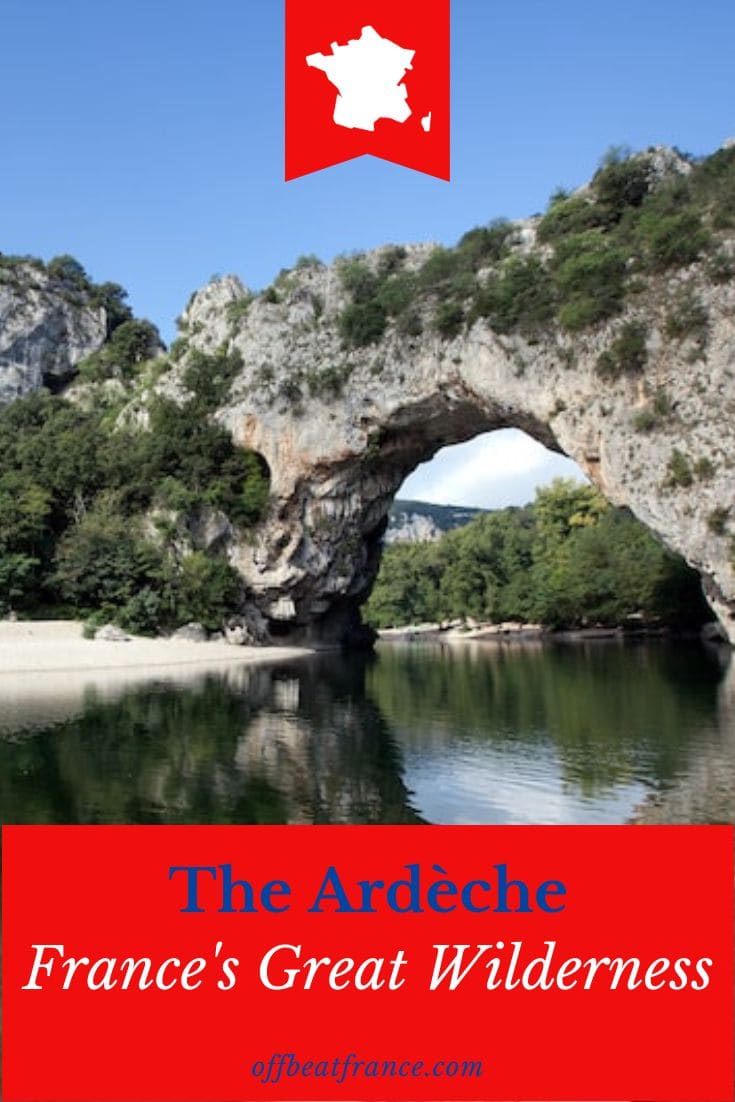 |
